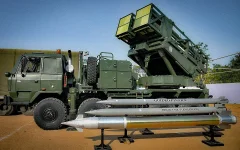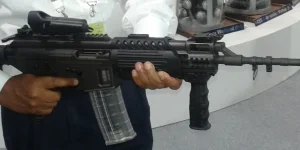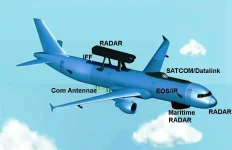- Views: 3K
- Replies: 7

India marked a significant step forward in its defence modernization program with the unveiling of a model of the DRDO-Airbus A321 NETRA Airborne Early Warning and Control (AEW&C) Mk2.
The event, held at the inauguration of the final assembly line for the C295 aircraft in Vadodara, highlights India's growing collaboration with international aerospace leaders and its commitment to developing indigenous military technology.
The NETRA AEW&C Mk2 is a critical advancement in India's airborne surveillance and command capabilities. Designed to meet the specific operational needs of the Indian Air Force (IAF), the AEW&C Mk2 will be equipped with a suite of advanced radars and sensor systems, enabling it to effectively detect and track airborne and maritime threats.
A key feature of the AEW&C Mk2 is its advanced radar system, which will include a derivative of the indigenously developed Uttam Active Electronically Scanned Array (AESA) radar. Developed by the DRDO, the Uttam radar provides enhanced detection, tracking, and engagement capabilities for multiple targets simultaneously, significantly boosting situational awareness for Indian military operations.
Airbus will play a key role in the project by utilizing its advanced facilities in Spain to modify the A321 aircraft. These modifications will include the integration of essential subsystems for the NETRA AEW&C Mk2's operation. Following these modifications, the aircraft will be returned to India for the final integration of indigenous systems developed by DRDO.
This collaborative approach underscores India's strategy of leveraging international expertise while simultaneously fostering domestic technological development. The NETRA AEW&C Mk2 is expected to significantly enhance India's surveillance capabilities and provide its military with a crucial advantage in both offensive and defensive operations.
According to sources, the Indian Air Force plans to operate a fleet of 12 Mark-1A and Mark-2 AEW&C platforms by the 2030s, in addition to the existing three Netra Mark-1 AEW&C and three Phalcon AWACS. This ambitious plan indicates India's commitment to establishing a robust airborne surveillance network.



